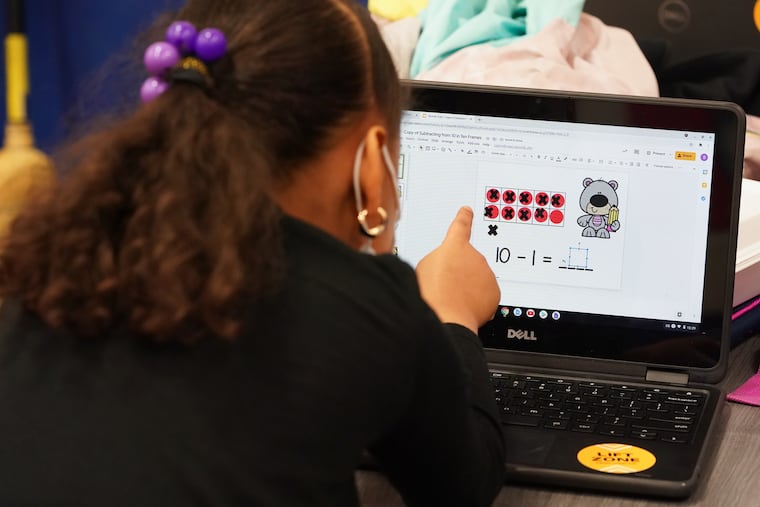Our chances of closing Philadelphia’s digital divide improved with the pandemic | Opinion
The insights born from Philadelphia’s bold experiment the past year should drive the debate as Congress negotiates $65 billion to expand broadband access.

When the pandemic hit last spring and closed our public schools, Philadelphia’s visionary plan to offer every student a home broadband connection became a model for school districts nationwide.
The real-life insights born from Philadelphia’s bold experiment should be driving the debate as Congress now negotiates a historic $65 billion package to expand broadband access.
For all we hear in this debate about rural areas without broadband infrastructure, consider this: An estimated 13.6 million urban households, predominantly people of color, are not connected — almost three times as many as the 4.6 million rural Americans who remain offline.
» READ MORE: Bridging the digital divide for the ‘have’ and ‘have nots’: How schools are meeting the need during remote learning
Our city is a case in point: Even though more than 99% of Philadelphia is wired for broadband, just 70% of households are connected to the high-speed service on their doorsteps.
In other words, Philadelphia’s digital divide is primarily a problem of broadband adoption — particularly among low-income families.
Philadelphia’s experience during the pandemic can offer some smart lessons on how to solve the problem.
First: Where fast speed and reliable networks are already in place, discounts and subsidies are a fast and direct way to help low-income families get online.
Broadband providers’ low-cost programs, offering broadband for as little as $10 a month to low-income households, were a lifeline for millions during the COVID-19 shutdown. Philadelphia’s PHLConnectED initiative went a step further; when the pandemic hit, the city partnered with providers and funders to offer free home broadband to 35,000 students from low-income families.
And Washington has since stepped up in the form of a temporary, $50-a-month “Emergency Broadband Benefit” available to low-income or recently unemployed households nationwide; more than 130,000 Pennsylvanians have already signed up.
For all its success, PHLConnectED also offers a second lesson: Even when broadband is offered for free, some still can’t — or don’t — take advantage.
Beyond the “too good to be true” skepticism these programs can encounter, some eligible families decline because their housing situations are temporary, or because they lack the digital know-how to believe that the internet is really relevant to them. Research — and years of real-world experience — point to a combination of digital literacy training and high-touch outreach as the silver bullet here.
This infrastructure package offers an opportunity to implement both lessons on a nationwide scale.
» READ MORE: Comcast commits $1 billion to help close the digital divide as Americans increasingly rely on the internet
The nation’s major civil rights organizations want to make the Emergency Broadband Benefit permanent, ensuring families in need will have a digital safety net to fall back on. Experts have also called on Congress to invest in a “digital navigators” corps of community partners to help our unconnected neighbors conquer the complex barriers to connectivity.
A permanent broadband benefit, evangelized and assisted by a corps of community-based digital navigators, can be effective when coupled with clear expectations that every family has reliable service with reasonable speed and bandwidth.
Congress needs to invest in proven ideas that can equitably expand digital participation. The stakes are too high to get this wrong.
As the late Rep. John Lewis once said, “Access to the internet is the civil rights issue of the 21st century.” While an estimated 80% of white adults are online, just 71% of Black and 65% of Hispanic adults are connected. Pew reports that one in five teens ages 13 to 17 are often or sometimes unable to complete homework assignments because they do not have reliable access to a computer or internet connection.
With $65 billion on the table, this infrastructure bill is the best opportunity we’ve ever had to close this digital divide. By all means, Congress should invest to bring broadband to remote, unconnected communities — but urban communities demand and deserve equal consideration. There’s enough money available to tackle these challenges, as long as we fall back on the lessons of our hard-earned experience and invest in ideas that work.
Donna Cooper is the executive director of Public Citizens for Children and Youth.